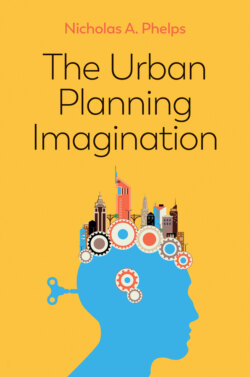Читать книгу The Urban Planning Imagination - Nicholas A. Phelps - Страница 36
Virtuality and synchronicity
ОглавлениеWhile similar or identical tendencies in societal constructs are commonly taken as evidence of a world society (Meyer et al., 1997), these same tendencies have been apparent historically. Thus, ‘we need to ask if … similarities … are the result of common but autarkic human responses to the structural processes of urbanization … and how far they are the effect of “connectivity” – the transfer of cultural, commercial and other ideas’ (Clark, 2013: 4).
There is historic evidence of synchronous but independent developments in urban systems in different parts of the world (Clark, 2013; Kostof, 1991). The grid is one geometric organizing principle used in the planning of cities. ‘Far more than a representation or signifier, the grid is a world-making device that literally brings new worlds into being’ (Rose-Redwood and Bigon, 2018: 3, original emphasis), as seen in the case of Melbourne in chapter 7. While the form may be universal, variations are apparent. The rectilinear grids of the ancient Roman and Chinese empires were physically similar but produced from contrasting creative mentalities (Laurence, 2013). The grid provides evidence of synchronicity but does not submit to simple stories of origin or imposition (Rose-Redwood and Bigon, 2018).
Today, the similarities that we notice between cities are more likely to be a product of the virtual connections between citizens, clubs or states in webs of exchange of images, ideas, practices and methods facilitated by information and communication technologies (ICTs). Built-environment professionals – architects, realtors, planners – have always borrowed but are now able to scan the world far more rapidly than in the past. Will planning be little more than ‘cut and paste’ or ‘photoshop planning’ (Rapoport, 2015)? Global perceptions of a city such as Dubai – one of the ‘born global’ cities and planning systems discussed in chapter 7 – are derived from very particular representations of it (Elsheshtawy, 2009). Indeed, the prominence of Dubai in popular perceptions and rankings has been consciously planned through the construction and projection of the symbolic power of high-rise architecture (Acuto, 2010).
The implications of ICTs for the built form are all the harder to predict and plan for because rates of take-up and penetration of successive technologies providing for physical and virtual mobility have accelerated. It took sixty-eight years for half of the US population to make use of telephones, seventeen years for them to have a car and just seven years – the time it might take to prepare a local plan – to be using the internet (Kellerman, 2012: 77). The same contradictions between the enormous fixity of infrastructures that provide for mobility remain with the widespread deployment of ICTs. The danger is that ‘the infrastructure of mobility, and the production and function of built forms could become the taken for granted bits, jettisoned from consciousness’ and from judicious planning, in contrast to a ‘digitally constructed, rationally planned set of activities’ produced and consumed by innumerable individuals (Buliung, 2011: 1377).
The increasingly vicarious character of the contemporary urban experience promises unthinking imitation in some mixes of the urban planning imagination, and that is a concern for all it would entail about the production of good or better places.
